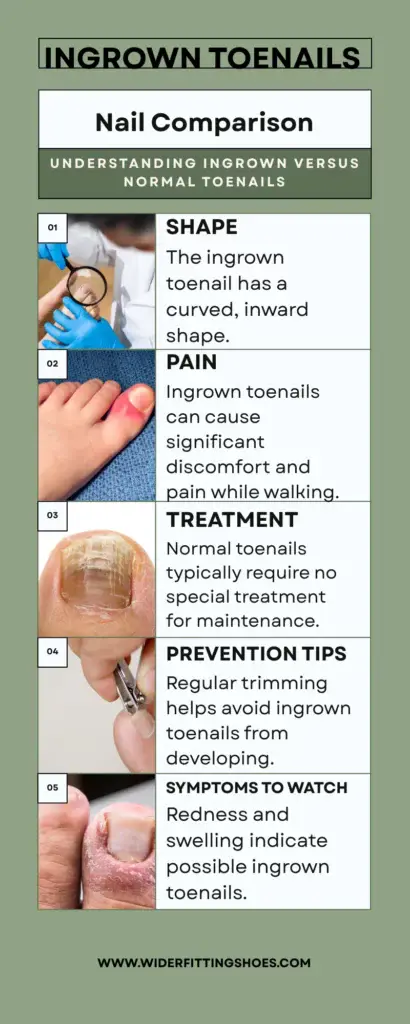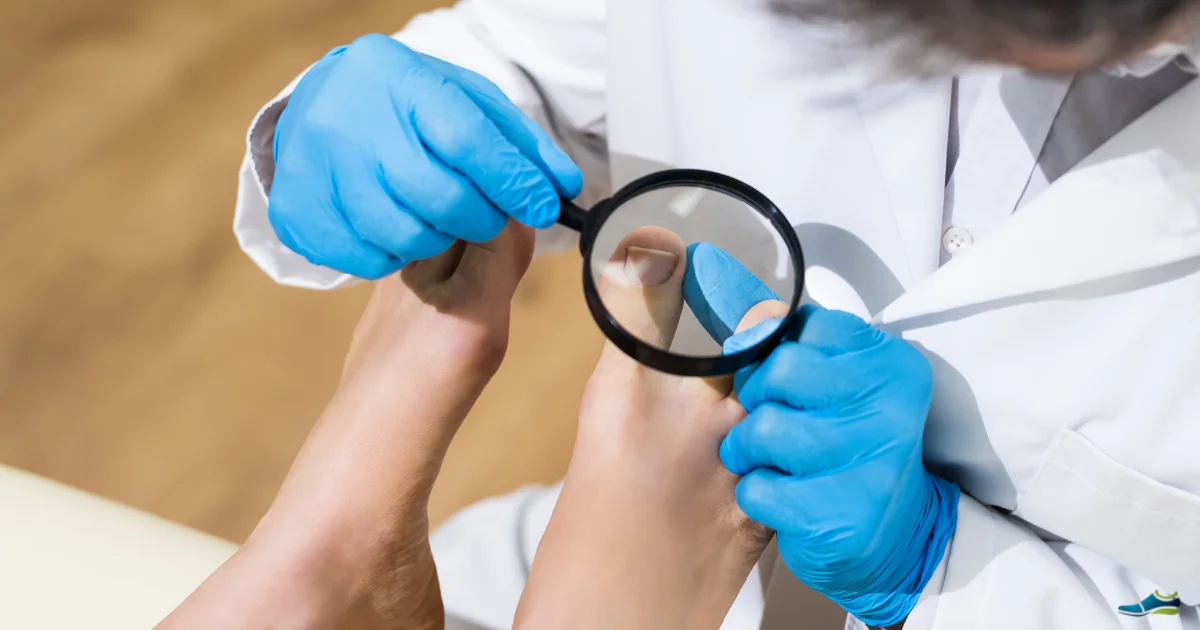Few things make walking more miserable than an ingrown toenail. That sharp sting with every step is a sign the nail edge is pressing into the surrounding skin. The good news? Some non diabetic cases are manageable at home, and the right footwear helps prevent repeat flare-ups but the best ingrown toenail treatment is at the Podiatrists Surgery.
This guide explains causes, symptoms, treatment, prevention, and what to look for in shoes if you’re prone to ingrowns.
What Are Ingrown Toenails?
An ingrown toenail happens when the nail edge or corner grows into the skin next to it. It usually affects the big toe, causing pain, swelling, redness and sometimes infection.
Looking for a bigger picture view of foot pain? You’ll find it in our Complete Guide to Foot Pain Relief — a practical overview that covers every cause from heel to toe and how to ease it fast.
Causes and Risk Factors
- Cutting nails too short or rounding the corners
- Toe-box pressure from narrow or shallow shoes
- Toe injuries (stubbing, repetitive pressure)
- Naturally curved (pincer) or thick nails
- Excessive sweating/poor nail hygiene
People with diabetes, neuropathy or poor circulation have higher risk of complications.
Symptoms and How to Recognise Them
- Pain and tenderness along one or both nail edges
- Redness, swelling, and warmth around the nail
- Hard, overgrowing skin over the nail edge
- Pus or drainage if infected
How Footwear Plays a Role
Tight or tapered toe boxes push the nail edge into the skin and delay healing. Shoes that work with your toes reduce pressure and irritation:
- Wide, deep toe box for wiggle room
- Soft, breathable uppers with minimal seams
- Secure midfoot so toes don’t jam forward

Treatment Options
At‑home care
- Soak in warm water (with Epsom salts or regular salt) 15–20 minutes, 1–2× daily for 3–5 days
- Dry well, apply antiseptic/ antibiotic cream, and protect with a sterile dressing
- Switch to open‑toed or very roomy shoes while healing
What to avoid
- Digging or cutting out the nail spike yourself
- Leaving sweaty socks/shoes on — keep the toe clean and dry
Professional care
- Conservative trimming and dressing by a podiatrist
- Partial nail avulsion (minor procedure) to remove the ingrown strip; often with chemical treatment to stop that edge regrowing
- Antibiotics only if infection is present
Prevention Tips
- Trim nails straight across; don’t round corners or cut too short
- File sharp corners gently rather than clipping
- Wear shoes that match your foot width and depth
- Keep feet dry; change socks if they get sweaty
Best Footwear for Ingrown Toenails
Prioritise:
- Extra toe room (width and height) to reduce side‑wall pressure
- Soft uppers with minimal seams over the nail edge
- Breathable linings to limit moisture
- Low, stable heel so toes don’t slide forward
When to See a Doctor or Podiatrist
- Severe pain, spreading redness, or discharge
- Recurring ingrowns despite good nail care
- You have diabetes, neuropathy, or poor circulation
Repeated ingrown nails can worsen pain from fungal nails or increase risk of blisters if shoes are too tight.
FAQs
Q: Can I remove an ingrown nail myself?
A: Manage only very mild cases at home; deeper or infected cases should be treated by a podiatrist.
Q: How long does it take to heal?
A: Mild cases often settle within 1–2 weeks with proper care; infected or recurrent cases take longer.
Q: Do tight socks cause ingrowns?
A: They can contribute by squeezing toes — especially when paired with narrow shoes.
Q: Is partial nail removal permanent?
A: If the nail root on that side is chemically treated, that edge usually doesn’t regrow (high long‑term success).
Don’t just tame the nail — fix the cause. With straight‑across trimming, breathable roomy shoes, and timely professional care, you can stop ingrowns from stealing your steps. Remember that the best Ingrown Toenail Treatment is available with your Podiatrist.

